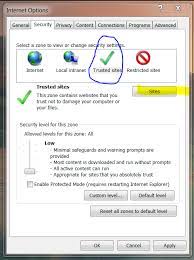Navigating the intricacies of SameSite cookie limitations is crucial for understanding web security. SameSite serves as a protective barrier implemented by browsers, controlling when cookies from one site are sent along with requests made to another. This mechanism helps shield against various cross-site threats such as CSRF, cross-site data leaks, and specific CORS vulnerabilities. Since 2021, Google Chrome has adopted Lax SameSite restrictions by default unless a website explicitly defines its cookie handling policy. This approach is part of an evolving standard that we anticipate will be embraced by other leading browsers in the near future.

Given this landscape, it’s vital to comprehend how these restrictions function and explore potential methods for circumventing them. Such knowledge is essential for effectively testing and identifying possible cross-site attack avenues. In the upcoming section, we will delve into the workings of the SameSite framework and clarify some key terms associated with it. Following that, we’ll examine several prevalent techniques that could allow for bypassing these restrictions—potentially exposing websites thought to be secure to CSRF attacks and other cross-site vulnerabilities.
In the realm of SameSite cookies, what exactly constitutes a site? Essentially, it refers to the top-level domain (TLD)—think .com or .net—along with an additional level of the domain name. This combination is often termed TLD 1. When evaluating whether a request qualifies as same-site, browsers also consider the URL scheme. For instance, a transition from http://app.example.com to https://app.example.com is typically recognised as cross-site by most browsers.
You might encounter the phrase practical top-level domain (TLD) in this discussion. This term helps address certain reserved multipart suffixes that are treated like top-level domains in practice, such as .co.uk.

Now, let’s explore how a site differs from its origin. The key distinction lies in their scope: a site encompasses multiple domain names, while an origin pertains to just one. Although these terms are related, it’s crucial not to confuse them; doing so could lead to significant security risks. Two URLs share the exact origin if they have identical schemes, domain names, and ports—though keep in mind that ports are usually inferred from the scheme.
To clarify further with examples, when we say the site, we’re referring to something less precise since it only considers the scheme and final part of the domain name. Therefore, it’s possible for a request from different origins to still be regarded as the same site; however, this doesn’t work in reverse.
Consider these scenarios:
– A request from https://example.com to https://example.com? Yes, for both same-site and same-origin.
– A request from https://app.example.com to https://intranet.example.com? It’s the same site due to sharing the TLD, but not the exact origin because of differing domain names.
– A request from https://example.com to https://example.com:8080? Not same-origin due to port mismatch.
– A request from https://example.com to https://example.co.uk? Not considered same-site or same-origin because of differing TLDs and domain names.
– Lastly, moving between http://example.com and https://example.com is also ruled out due to mismatched schemes.
Understanding these distinctions is vital because any vulnerabilities arising from misinterpretation can have severe consequences for security.

What is the mechanism behind SameSite? Prior to its introduction, browsers would automatically send cookies with every request made to their originating domain, regardless of whether the request originated from an unrelated third-party site. The SameSite attribute changes this by allowing both browsers and website administrators to specify which cross-site requests should include certain cookies. This function is handy in mitigating the risks associated with CSRF (Cross-Site Request Forgery) attacks, where a malicious site tricks the victim’s browser into making a request that could lead to unwanted actions on a vulnerable website. Since these harmful requests typically depend on cookies tied to the user’s authenticated session, they will fail if the browser does not send those cookies along.
Currently, all significant browsers recognise three levels of SameSite restrictions: Strict, Lax, and None. Developers can set a specific restriction level for each cookie they create, giving them greater authority over when these cookies are utilised. To implement this control, developers simply need to add the SameSite attribute in the Set-Cookie response header alongside their chosen value—like so: Set-Cookie: session=0F8tgdOhi9ynR1M9wa3ODa; SameSite=Strict.
While this feature offers some defence against CSRF attacks, it’s important to note that none of these restrictions guarantees complete protection—a point we’ll illustrate through interactive labs later in this section.

It’s worth mentioning that if a website fails to assign a SameSite attribute when explicitly issuing a cookie, Chrome will automatically apply Lax restrictions as its default setting. This means that even without developer intervention, cookies will only be sent in cross-site requests under certain conditions.
When it comes to Strict mode—if a cookie is designated with the SameSite Strict attribute—browsers will refrain from sending it with any cross-site requests at all. In plain terms, if the site making the request doesn’t match what’s displayed in the browser’s address bar at that moment, then that cookie won’t be included at all. This approach is highly recommended for bolstering security against potential threats.
In the realm of web security, the implementation of Lax SameSite cookie restrictions introduces a nuanced dance between browsers and cookies. Under this framework, a browser will only dispatch a cookie during cross-site requests if two specific criteria are satisfied: the request is made using the GET method, and it originates from a top-level navigation action by the user—like clicking on a link. This stipulation means that cookies won’t accompany cross-site POST requests, which are typically employed for actions that alter data or state. Such POST requests are more vulnerable to Cross-Site Request Forgery (CSRF) attacks due to their nature. Additionally, cookies don’t travel along with background requests initiated by scripts, iframes, or image references.
Now consider a cookie marked with the SameSite None attribute; this setting is practical.

It’s important to understand that server-side redirects do not allow for the same type of attacks. When a browser encounters a redirect initiated by a cross-site request, it recognizes the nature of the request and enforces cookie restrictions accordingly.
Now, consider the risks posed by vulnerable sibling domains, whether you’re assessing another’s website or securing your own. A request can still be considered the same site even if it originates from a different domain. Therefore, it’s crucial to conduct a comprehensive review of all potential vulnerabilities across all related domains. Particularly concerning are flaws that could trigger arbitrary secondary requests—like those found in Cross-Site Scripting (XSS)—which can entirely undermine site-specific defences and leave all associated domains exposed to cross-site threats.
Moreover, while traditional Cross-Site Request Forgery (CSRF) attacks are well-known, it’s vital to remember that if the target site utilizes WebSockets, this feature could also be at risk from Cross-Site WebSocket Hijacking (CSWSH). Essentially, CSWSH is just another form of CSRF targeting the handshake process of WebSockets. For deeper insights into these vulnerabilities, refer to our dedicated section on WebSocket security issues.

Now, let’s delve into practical scenarios involving SameSite cookie restrictions. Take, for example, cookies with Lax SameSite settings; they typically aren’t sent during cross-site POST requests unless certain conditions apply. As previously noted, when a cookie is set without specifying a SameSite attribute, Chrome defaults to applying Lax restrictions—however, there’s an exception: for top-level POST requests made within the first 120 seconds after login. This creates a two-minute vulnerability window where users might be at risk from cross-site attacks.
It’s worth noting that this two-minute period does not pertain to cookies explicitly marked with SameSite Lax attributes. Timing an attack to exploit this brief window can be quite challenging in practice; however, if you can identify a method on the site that compels the victim’s browser to generate a new session cookie—such as through an OAuth login—you could refresh their cookie before executing your primary attack strategy.
For instance, completing an OAuth flow often results in issuing fresh session cookies since the OAuth service may not recognize whether users are still logged into their target site. To ensure this cookie refresh happens without requiring user intervention for re-login, you must initiate top-level navigation, which includes their current OAuth session cookies.

This approach introduces additional complexity as you’ll need to redirect users back to your domain in order to carry out your CSRF attack effectively. Alternatively, you might consider triggering this refresh via a new tab so that the browser remains on the original page while you prepare for your final strike.
A small hurdle arises here: browsers typically block pop-up tabs unless they’re opened through direct user action. For instance:
“`javascript
window.open(‘https://vulnerable-website.com/login/sso’);
“`

This would generally get blocked by default due to security measures in place. To circumvent this issue effectively, wrap your pop-up call within an on-click event handler like so:
“`javascript
window.click = function() {
window.open(‘https://vulnerable-website.com/login/sso’);
};
“`
By doing this, you’re ensuring that `window.open()` only executes upon user interaction with the webpage—a clever workaround indeed!
How to Bypass SameSite Cookie Restrictions on Maxthon Browser
1. Understand SameSite Cookies: Before attempting to bypass restrictions, familiarise yourself with the SameSite cookie attribute. It regulates how cookies are sent with cross-site requests, which can affect your browsing experience.

2. Access Browser Settings: Launch the Maxthon browser and click on the menu icon located at the top-right corner of the window. Navigate to Settings from the dropdown menu.
3. Locate Advanced Settings: Within the settings menu, scroll down or search for “Advanced” settings. Click on this option to reveal more configuration possibilities.
4. Modify Cookie Preferences: Look for options related to cookie management. Depending on your version of Maxthon, you may find a section specifically addressing cookie behaviour where you can adjust settings related to SameSite attributes.
5. Disable Strict Mode: If available, consider turning off any strict cookie handling modes that enforce SameSite policies excessively. This might involve unchecking certain boxes or selecting less restrictive options.
6. Utilize Developer Tools: For advanced users, open developer tools by pressing `F12` or right-clicking and selecting Inspect. Navigate to the ‘Application’ tab, where you can manage cookies directly.
7. Edit Cookie Attributes: Identify the specific cookies you need access to and modify their attributes directly within the console if possible, ensuring that they do not have a SameSite restriction that could block them on cross-site requests.
8. Test Changes: After making adjustments, refresh your pages or restart your browser to see if the desired changes take effect and cookies function as intended without being blocked by SameSite policies.

9. Stay Updated: Regularly check for updates in configurations, as browser updates may change how these settings work in future versions of Maxthon or introduce new security features that necessitate further adjustments.
